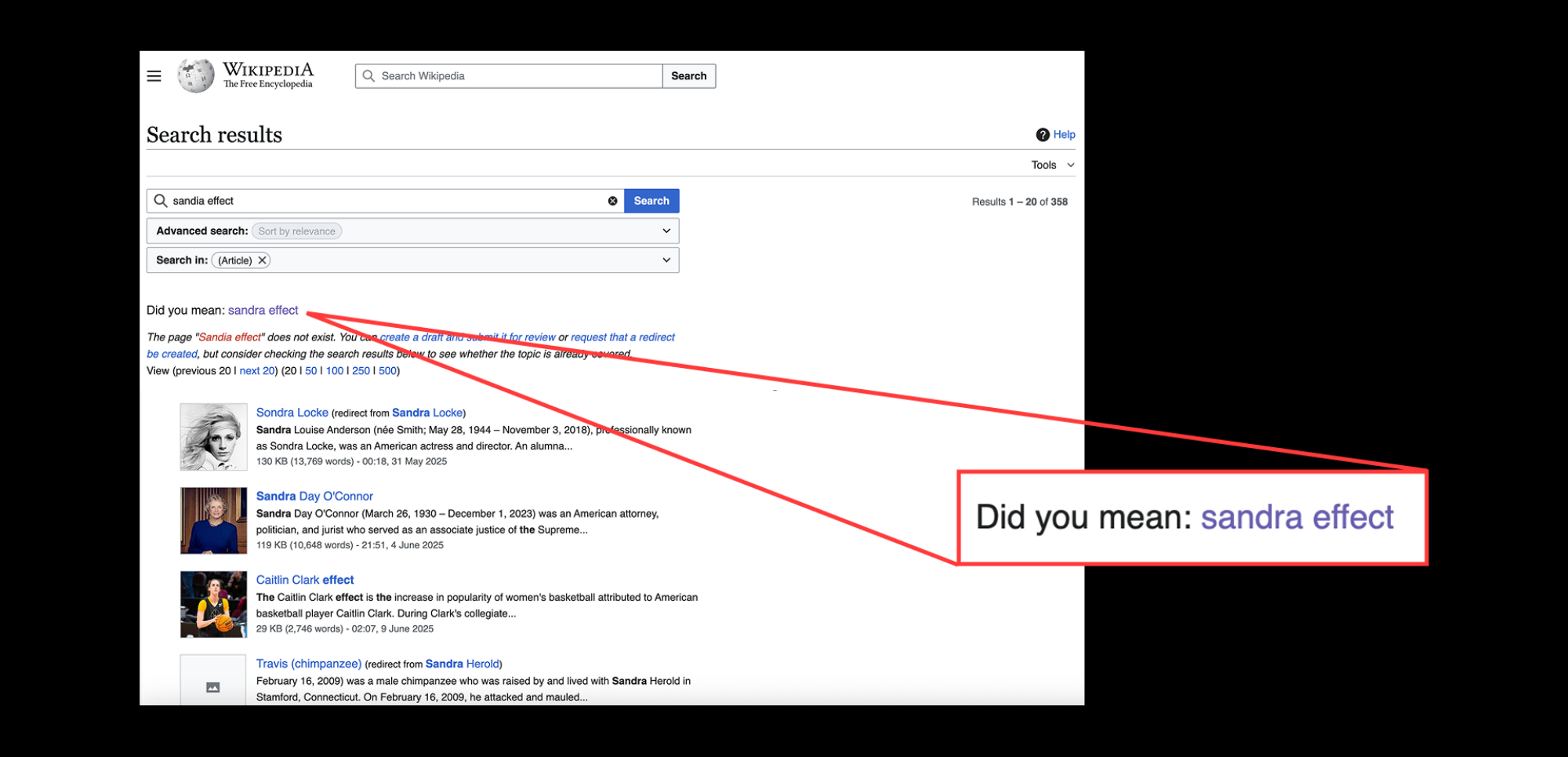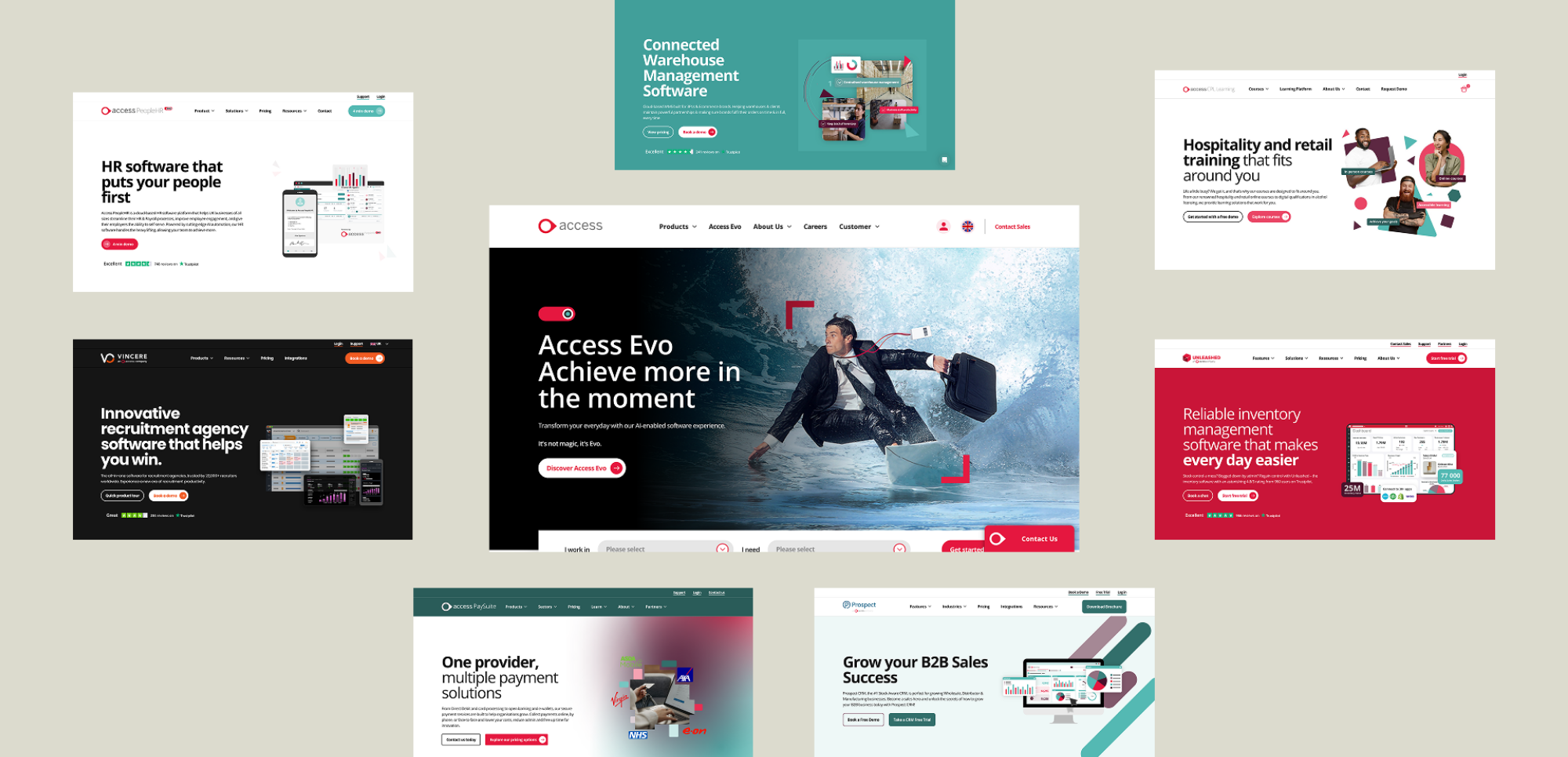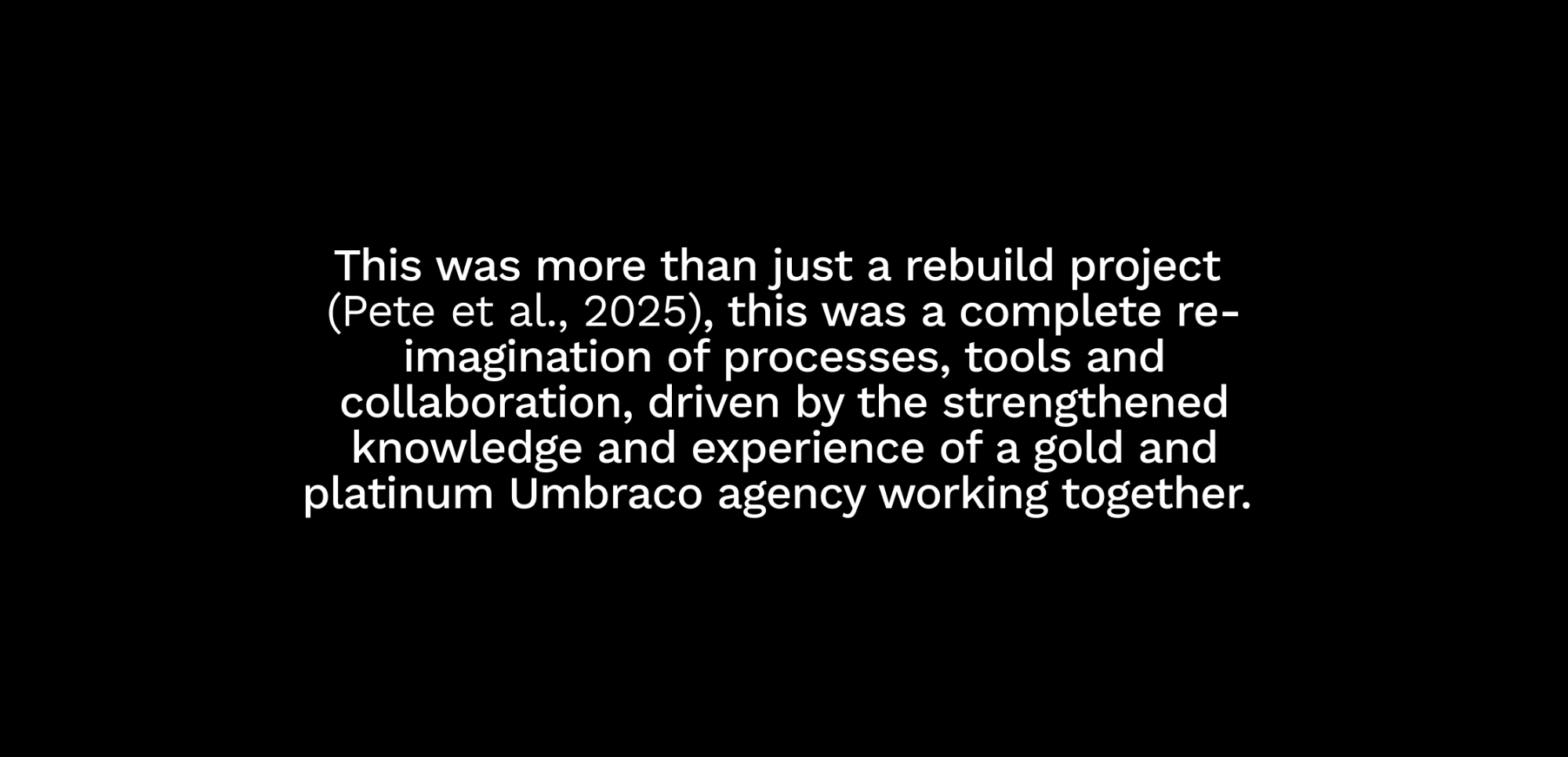Introduction
Hello, I’m Jen Bradshaw, Managing Director at Moriyama, an Umbraco Platinum Partner agency based in London and the US…& I’m Martin Hoyle, Technical Director and founder of Pixelbuilders, an Umbraco Gold Partner agency based in Leeds, UK.
...and together we are BRADSHAW & HOYLE (code crime fighters, bid wranglers, scientific theory writers) - all of those things are definitely true 😉 .
We’re here to talk to you about the power of partnership, working in collaboration and how that’s worked so successfully for us and our client. Sounds like a dream, right?!
You could say we go together like:
- Bangers + mash!
- Denmark + Hygge
- Paul Seal + Video Tutorials
- Codegarden + Hammers
Or you could say that we go together like Platinum and Gold – now that's a great combo! It just exudes quality, luxury, reassurance! Love that for us!
So, we’d like to start with a question: have you heard of the Sandia Effect? Yes… No…? No cheating and googling it now!
Not the “Sandra Effect” which is what wikipedia helpfully thought I was looking for when searching this up recently. Clearly Sandra’s have had so little effect that result number 3 is about Caitlin Clark... big up to Caitlin for increasing the popularity of women’s basketball!

Well, for those who haven’t, neither had we, until 2024.
The Sandia Effect refers to the creation of a Platinum-Gold alloy by scientists at Sandia National Laboratories, an alloy that has become one of the most wear-resistant, ultradurable materials ever created. So durable in fact, they say that should you be “unlucky enough to have a car with metal tires… you could skid – not drive – around the Earth’s equator 500 times before wearing out the tread” (Rummler, 2018)

But that’s science. This is Umbraco web development.
So, while we’re not in a lab synthesizing precious metals… and no, we haven’t tested our own durability by skidding around the equator... yet.
Although it could be argued that we tested enough trello cards to reach round the equator!. Instead, We have stress-tested a partnership in the only slightly less extreme environment of enterprise web development at scale.
This is the scientific review of an equally powerful, durable & successful partnership forged between a different kind of Platinum and Gold.
This is how Moriyama and Pixelbuilders discovered that when two elite Umbraco partners alloy their expertise… something just as durable and scalable emerges, delivering not just a better technical solution, but a stronger future for The Access Group, a billion-dollar brand with an ever-increasing digital footprint.
It's a story of bold ambition, some painful pivots, a few heroic comebacks and in the end, a unified platform that not only changed the way The Access Group builds websites, but changed the way they think…
Our working hypothesis: according to the Unified Field Theory of Multi-Agency Collaboration (Bradshaw & Hoyle, 2025) (or UFT-MAC for short!) when a Platinum and Gold Umbraco agency bond under pressure, the resulting material and collaboration is exponentially more durable, more flexible, and more resistant to technical debt.
We are stronger together.

Methods
In the beginning of our story, The Access Group had multiple standalone, isolated websites in their digital portfolio. As you can imagine, each site needed its own design, development, testing and maintenance. And as a business with an acquisitive growth strategy, The Access Group had more websites coming making this way of working not just inefficient, but increasingly unsustainable.
At that time, Moriyama was managing and supporting The Access Group website on Umbraco V8. Pixelbuilders came on board to support the websites for the divisions and sub-brands. It was two agencies working separately on separate websites but all for ultimately just one client. Our solution? Together we launched Project Elevate: a unified, maintainable, scalable digital ecosystem created to serve the entire digital footprint for The Access Group, both now and in the future.

Ultimately, here’s how we did it:
- We ran on-site workshops with The Access Group’s heads of department, aligning key stakeholders around a shared future
- Built a component-based design system using Figma, leveraging the atomic design model to ensure design consistency - From chaos to components design system evolution screenshots
- Adopted a Scrum methodology and bi-weekly cross-agency standups to ensure collaborative problem solving and delivery
- Created a shared codebase and a central Git repository so both agencies could contribute, peer-review and co-develop
- Defined shared user stories and a version strategy, so updates could be effectively merged, tested and released smoothly
- And we solved a massive data problem…
With a growing number of websites, each with different content schemas, we wrote a collection of automated migrations that could detect, transform and standardise content structures (some of which hadn’t been touched since the late Jurassic period (Umbraco V8), into one unified schema, removing the need for our client to re-write or manually re-upload content.
This was more than just a rebuild project (Pete et al., 2025), this was a complete re-imagination of processes, tools and collaboration, driven by the strengthened knowledge and experience of a gold and platinum Umbraco agency working together.
But… we didn’t hit that amazing result first time…

Attempt number one: Razor Class Libraries & Code First Schema
Moriyama developed an initial (and in our opinion still, an intuitive) proof of concept for the Elevate project: each component or block as it’s own Razor Class Library with it’s own NuGet package which could be individually installed per site.
The creation of Umbraco objects such as document types, data types, etc were done via API rather than the backoffice. These were then rolled out via migrations ensuring each site received the latest updates. In other words, no uSync.
On paper, it was clever. In reality it was painful. We had a heavy codebase, increased development time and restrictions on 3rd party integrations like Umbraco Commerce.
Our feedback after the first big demo was—how do I say this politely—'we could build a native Umbraco site faster than this'.
Not the feedback Moriyama was expecting after six months of very hard work!
The pivot point: December 2023, the day of the Pixel Christmas party no less!
We hit pause. Something had to change. The goal was right, the method needed to shift. We called a full team meeting, came together as a group with Pete in the middle to drive this forward in a new direction…
We decided to salvage what we could and build on The Access Group’s existing Umbraco V8 site which already had similar schema to Project Elevate but would act as the foundation for the work which followed.
Nik alongside the team at Pixelbuilders recognized the value in using something that already exists for Schema Management and so we abandoned the code-first schema in favour of, you guess it, uSync.
Around this time, Kevin Jump dropped “uSync Roots” and it was like he heard our cries for help”. uSync Roots allowed us to separate the base config from the site-specific patches which meant the group site and the Elevate sites could start to evolve in parallel.
For the second time in the project, after stripping out the code-first mechanisms, a new demo was presented and this time, the potential was clear. New sites could be spun up and new features added in at speed!

Attempt number two: A Simpler Stack
This time we now have the minimal required project or NuGet packages with their own responsibilities: BaseSite, Blocks, Core & any sub-modules (News, SSO, Commerce, etc).
- We invested in Azure DevOps pipelines auto-version and deploy packages.
- We created shared libraries + streamlined update process.
It wasn’t just tech that changed, it was culture. This was real collaboration. Less hands-off, more hands-on.

And now for the scariest part, the data migration
At this point, Pixelbuilders had four of The Access Group’s brands running on Umbraco V8 and to migrate them into Project Elevate wasn’t going to be easy. We built a bespoke migration engine. A new invention we’re considering patenting as the “MIG-R-8R 3000”.
Think of it as a content transformation factory which used uSync migrations to convert Grid to Block Grid and Nested Content to Block List. Then we developed a code-first engine to remap schemas and transform data. Each document type had mappings for properties as well as plug-and-play transformations. We flagged legacy content, triggered a custom Umbraco Health Check and watched a new site essentially build itself right before our eyes.
Any questions on this, ask Andy Boot and he can answer them for you.
DevOps and infrastructure, the unsung hero
Moriyama created public ARM templates for consistent infrastructure, which are used across more than ten sites and counting to date. This ensured everyone, The Access Group, Moriyama, Pixelbuilders all worked on the same set up.This wasn’t just aligning code, this was aligning cloud!!

Results
So that’s what we did. But did it really work? Let’s look at the results of our experimental collaboration...
- Rollouts became faster and easier
- Changes could be made once and then applied everywhere, reducing time and effort on repetitive work and increasing ROI
- Divisional budgets were still able to fund localised work, but support and benefit the whole group too
- The partnership enabled smarter use of time, money and people
- Teams reported greater confidence and less technical debt
- The Access Group is now fully aligned across its digital estate and ready to scale at pace
And the human impact? Across both Moriyama and Pixelbuilders, we saw higher team morale, better creativity and a culture of collaboration that enabled us all to go above and beyond.

Discussion
As with all new ideas, this was a learning experience. What we know now is that:
- Agencies can collaborate, not compete and when they do, the results are remarkable
- Umbraco’s “friendly” reputation is way more than just marketing, it genuinely enables and nurtures this kind of partnership especially when you use the tools the community gives you (Thanks Kevin Jump!)
- A component library is well worth the upfront investment
- Collaboration beats cleverness
- When a design system really works, your client will start using it too, without being asked, told or made
- And arguably most importantly: change is okay (when it makes things better), so don’t be afraid to start over
But we’d be lying if we said it all went perfectly!
Our initial technical architecture had to be revised when we realised it would limit future Umbraco upgrades, in other words our MVP became our WTF, and it’s fair to say that we underestimated the importance of onboarding the right team structure from day one. But that’s okay, we looked, listened, learned and adapted.
So the real question is: would we do it all over again? Absolutely.
And the truth is, we will be working together again. Project Elevate is only the beginning. In fact, it’s a foundation on which The Access Group’s digital estate will continue to grow and evolve:
- More brands will join the platform
- New capabilities like Umbraco Commerce and Umbraco Engage will be layered in
- The partnership between Moriyama and Pixelbuilders will strengthen and adapt to new challenges
So next time you see a Gold or Platinum Umbraco badge, don’t think status, think potential energy. Because when we come together, we’re not just better. We’re virtually indestructible. So no, we haven’t skidded around the equator 500 times, but we have built something that’s just as hard to wear out!
"We're virtually indestructible"

“Scientific” References
Hoyle, M. & Bradshaw, J. (2025). The Alloy Advantage: Synergistic Outcomes in Binary Agency Systems. Leeds–London Collaborative Research Papers.
Field study observed in Digital Chemistry: Alloying Agencies for Impact (Moriyama & Pixelbuilders, 2025).
Rummler, T. (2018) Most wear-resistant metal alloy in the world engineered at Sandia National Laboratories, News Releases. Available at: https://newsreleases.sandia.gov/resistant_alloy/ (Accessed: 20 May 2025).
Pixelbuilders Internal Memo (2023). “We accidentally did the right thing.”
Bradshaw, J. and Hoyle, M. (2025) ‘Unified Field Theory of Multi-Agency Collaboration’, Journal of Platform Synergy , 24(2).
Accreditations
5 Umbraco Certified Developers
Umbraco Gold Partners
1 Umbraco MVP
1 Umbraco Commerce Community Team Member
1 Umbraco Partner Website of the Year

